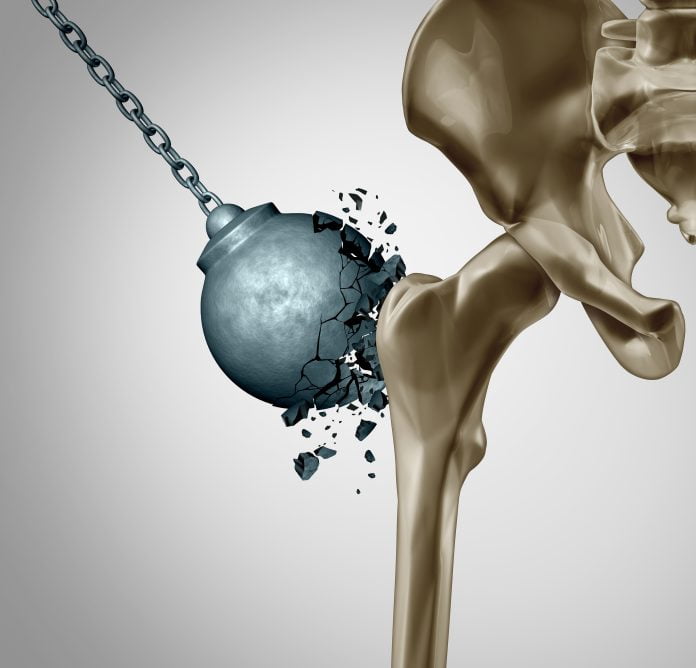To reinforce the importance of bone health and osteoporosis prevention, Osteoporosis Australia (OA) has today [9 February] announced its official rebrand as ‘Healthy Bones Australia’.
“The renaming of our consumer organisation to Healthy Bones Australia reflects our aim – to protect, build and support better bone health for all Australians,” says MJA Insight article co-author and Medical Director, Healthy Bones Australia, Professor Peter Ebeling AO, Melbourne.
The rebrand announcement coincides with the publication of an article by Healthy Bones Australia experts in MJA Insight, presenting preliminary findings and recommendations from their recent Inaugural National Consumer and Community Forum.
The purpose of the Forum was to hear directly from people living with osteoporosis, and to address health system barriers to improving the bone health of Australians.
“Concerningly, the prevalence of osteoporosis in Australia is on the rise, with more than 4.74 million Australians over 50 years of age … living with poor bone health,” says Professor Ebeling.
Professor Ebeling adds that given this rise and the increasing number of associated fractures, more needs to be done to improve public awareness of the importance of maintaining healthy bones, and the diagnosis and treatment for those at risk and living with the disease.
“Early diagnosis of osteoporosis is vital to reducing fracture rates, and their subsequent impacts and costs. These osteoporotic fractures cost the Australian healthcare system more than $3 billion each year,” he says.
To increase community awareness, and to improve education, diagnosis and management, the Forum has made the following recommendations:
- The critical need for readily accessible osteoporosis treatments.
- Improved capture of patients’ post-fracture through the hospital system, to both diagnose osteoporosis and commence treatment (via more Fracture Prevention Clinics).
- A substantial increase in Australian’s awareness of risk factors for poor bone health and osteoporosis.
- General Practitioners (GPs) to focus more on bone health to prevent osteoporosis and fractures.
“Public health messaging about the importance of prioritising and maintaining healthy bones tailored to those aged 50 and over with risk factors, younger adults with specific risk factors, and those who have sustained a fracture, is very important,” says MJA Insight article co-author and Deputy Chair of the Medical and Scientific Advisory Committee, Healthy Bones Australia, Dr Weiwen Chen, Sydney.
“Evidenced-based, consumer resources are vital, alongside core services, such as a national website, a toll-free helpline, risk factor fact sheets and online self-assessment tools, all of which are available free of charge from Healthy Bones Australia.
“These resources remain critical, together with targeted awareness campaigns, particularly given Covid-19 restrictions have shown online access to credible health information is highly valued.”
‘Our new resource hub’
It’s predicted that by 2022, around 6.2 million Australians over 50 years of age will be living with poor bone health and that a fracture will occur every 2.9 minutes.
Reportedly, by 2022, the projected total cost of poor bone health among Australians aged over 50 years will be $3.84 billion, comprising ambulance services, hospitalisations, emergency departments and outpatient services, rehabilitation, aged care aged care and community services.
“Ignoring bone health has severe consequences, including broken bones. This should be avoided by focusing on prevention, which means understanding risk factors for poor bone health, early diagnosis and appropriate treatment,” says CEO of Healthy Bones Australia, Greg Lyubomirsky, Sydney.
“Our new name, ‘Healthy Bones Australia’, reflects this goal, while our new resource hub – healthybonesaustralia.org.au – offers the community valuable educational tools. Poor bone health is a public health issue – 173,000 broken bones each year is unacceptable.”
To learn more about Healthy Bones Australia, visit: healthybonesaustralia.org.au.
Reference:
Watts, J., Ambimanyi-Ochom, J, & Sander K, Osteoporosis costing all Australians: A new burden of disease analysis 2012-2022. 2013, Osteoporosis Australia.











